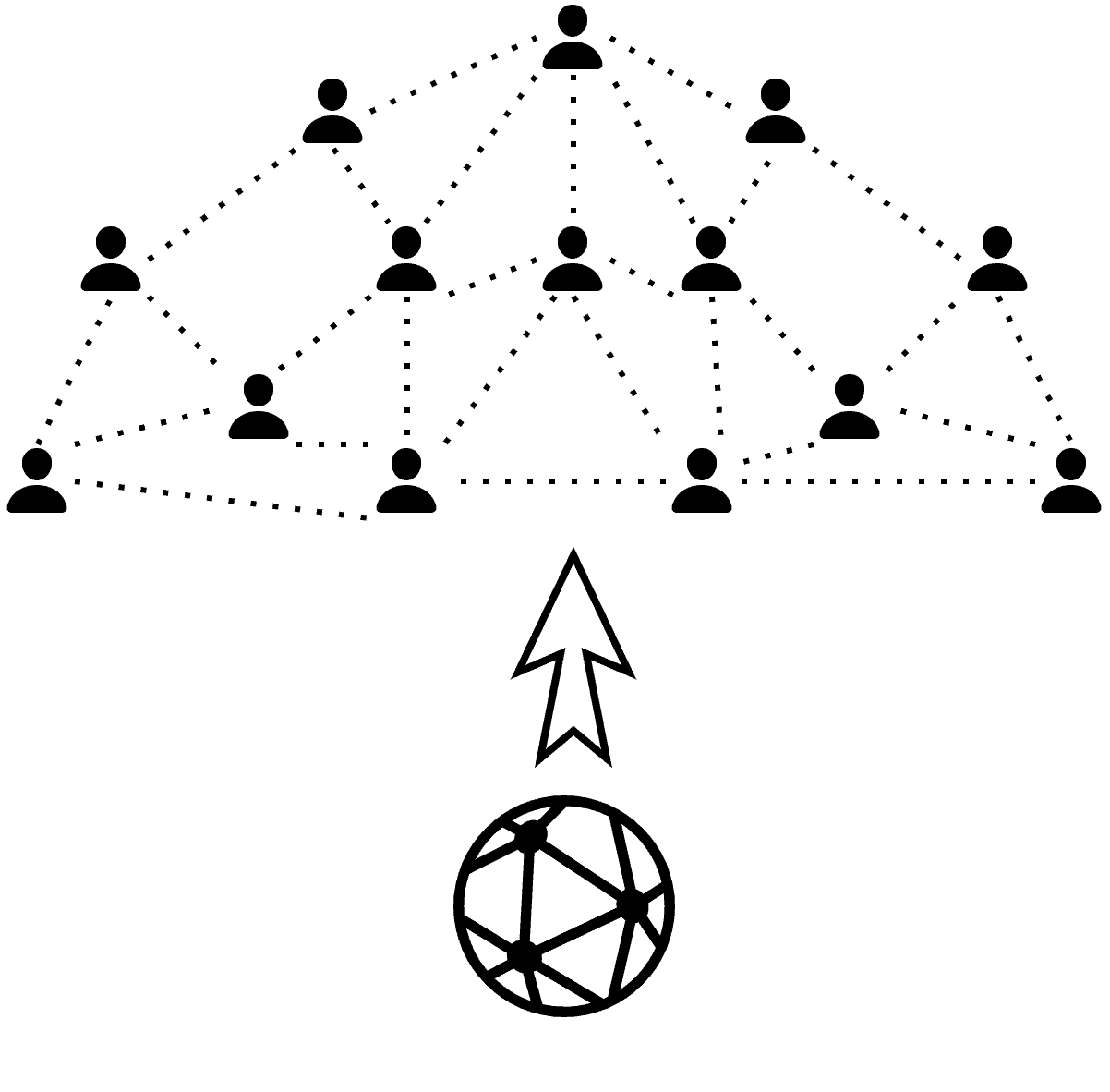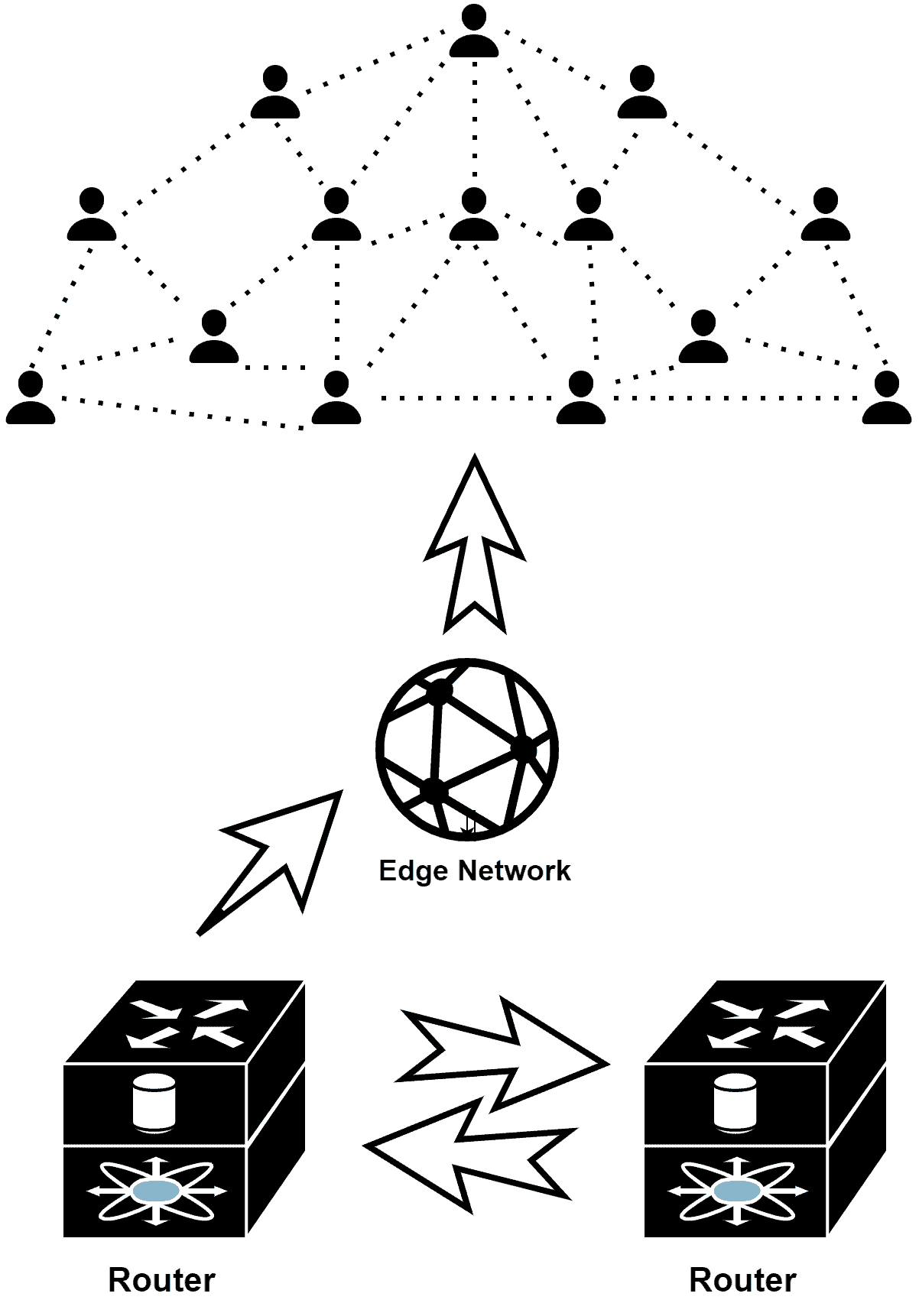1. 概述
本文将探讨网络架构设计中的两个重要概念:边缘网络(Edge Network)与核心网络(Core Network)。
我们会通过对比它们的结构、功能、使用场景以及技术特点,帮助你更清晰地理解两者的区别,并在实际项目中做出更合适的设计选择。
2. 简介
网络设计有多种方式,但无论采用哪种结构,都需要考虑几个关键因素:性能优化、设备选型、拓扑结构、路由策略等。
在网络架构中,边缘网络通常靠近终端用户,而核心网络则承担着高速转发、连接多个边缘节点的中枢作用。两者在设备层级、跳数(hop)、路由协议等方面存在明显差异。
接下来,我们将分别介绍边缘网络和核心网络,并结合示例帮助你更好地理解它们的应用场景。
3. 边缘网络(Edge Network)
边缘网络的特点是:
✅ 跳数少
✅ 层级结构简单
✅ 通常靠近终端用户
✅ 使用的 Layer 3 设备较少或没有
边缘网络主要用于连接靠近用户端的设备,例如分支机构、远程站点、数据中心接入层等。它通常采用 IP 路由协议,如 VRRP(虚拟路由器冗余协议) 或 PBR(策略路由) 进行连接。
示例结构图

使用场景
- 用户通过单一 ISP 接入互联网
- 带宽充足、延迟不是主要瓶颈
- 需要减少网络跳数以提升性能和设备利用率
- 降低设备部署成本
优势
- 减少跳数,提高响应速度
- 降低设备数量,节省成本
- 更适合靠近终端用户的接入场景
✅ 踩坑提示:边缘网络不适合承担大规模、高速转发任务,否则容易成为性能瓶颈。
4. 核心网络(Core Network)
核心网络是整个网络架构的“中枢”,它连接多个边缘网络,负责高速转发数据流量。
它的特点包括:
✅ 包含更多 Layer 2 和 Layer 3 设备
✅ 网络跳数较多
✅ 位于网络架构的中心位置
✅ 支持高速数据转发
核心网络通常部署在企业总部、数据中心之间,使用如 MPLS(多协议标签交换)、OSPF(开放式最短路径优先) 和 BGP(边界网关协议) 等高级路由协议进行互联。
示例结构图

使用场景
- 连接多个边缘网络或数据中心
- 需要多个 ISP 支持
- 对网络性能、稳定性和扩展性要求高
- 使用 WAN 或 LAN 技术进行高速传输
优势
- 支持大规模网络互联
- 数据转发效率高
- 网络结构稳定、冗余性强
✅ 踩坑提示:核心网络对设备性能和网络设计要求高,部署成本相对较高。
5. 核心区别对比
| 特性 | 核心网络 | 边缘网络 |
|---|---|---|
| 网络跳数 | 更多 | 更少 |
| Layer 3 设备数量 | 多 | 少或无 |
| 核心设备类型 | 高端路由器、交换机、冗余链路 | 路由交换机、防火墙、复用器 |
| 接入交换机位置 | 网络中心 | 网络边缘 |
| 首跳路由协议 | MPLS(如 OSPF、BGP) | IP 路由(如 PBR、VRRP) |
| 适用场景 | 多 ISP、数据中心互联、骨干网络 | 单 ISP 接入、远程站点、用户侧接入 |
6. 总结
边缘网络和核心网络是网络架构设计中的两个重要组成部分:
- 边缘网络更适合靠近用户侧的接入场景,结构简单、跳数少,适用于带宽充足、延迟要求不高的环境。
- 核心网络则承担着高速转发、多网络互联的任务,结构复杂、设备层级高,是整个网络的中枢。
在实际部署中,二者通常结合使用,形成完整的网络架构。根据具体业务需求和网络规模,合理划分边缘与核心,才能实现高性能、高可用的网络服务。
✅ 最后建议:在设计网络架构时,应根据业务需求、预算、扩展性等多维度进行评估,避免盲目追求复杂结构或过度简化。